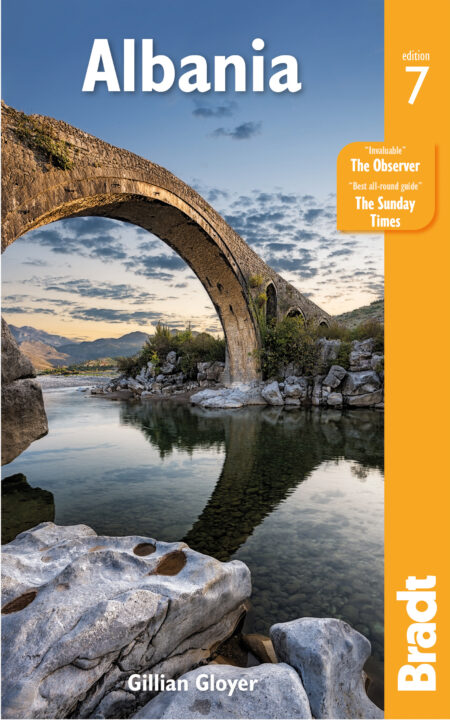For the first 25 years of Albania’s post-communist history, the last thing people wanted to be reminded of was the political repression and economic hardship they had so recently succeeded in getting rid of. Recently, however, national and local authorities have begun to invest in conserving some of the more notable communist sites and curating them so that Albanians and visitors can learn about this difficult and controversial period.
Dajti Hotel, Tirana
The Dajti Hotel played a pivotal role in its first half-century. Designed by Italian architects in the 1930s, it was the only hotel in Tirana until what is now the Tirana International Hotel opened in the 1960s. In the communist period, almost all foreign visitors were accommodated in the Dajti.
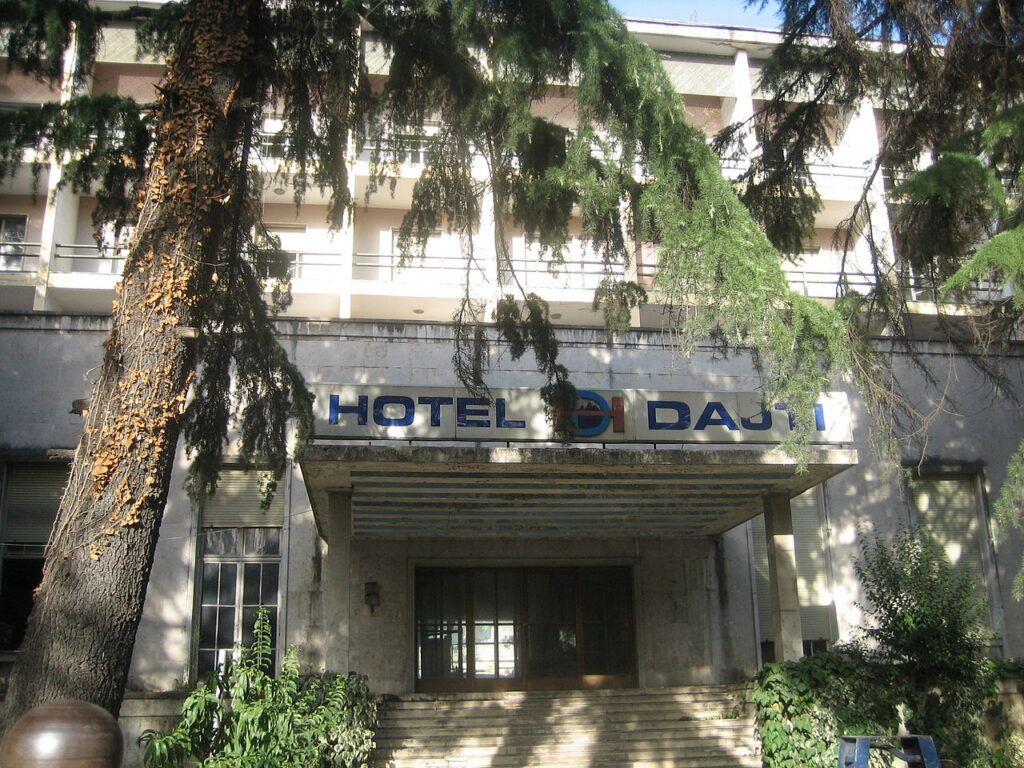
Ordinary Albanians were not allowed through the doors until the advent of democracy. Countless treaties were negotiated and plots hatched in the Dajti Hotel and although the statues of Lenin and Stalin have been removed, it remains largely unchanged. In 2021, work began at last to redevelop the building as offices for the National Bank of Albania.
The House of Leaves, Tirana
The House of Leaves is the former surveillance centre of the Sigurimi, Albania’s secret police. It was built in 1931 as a maternity clinic, founded by Zog I’s personal physician, and taken over secretly by the Sigurimi, for use mainly by the technicians who tapped people’s telephones and installed bugs in their apartments.
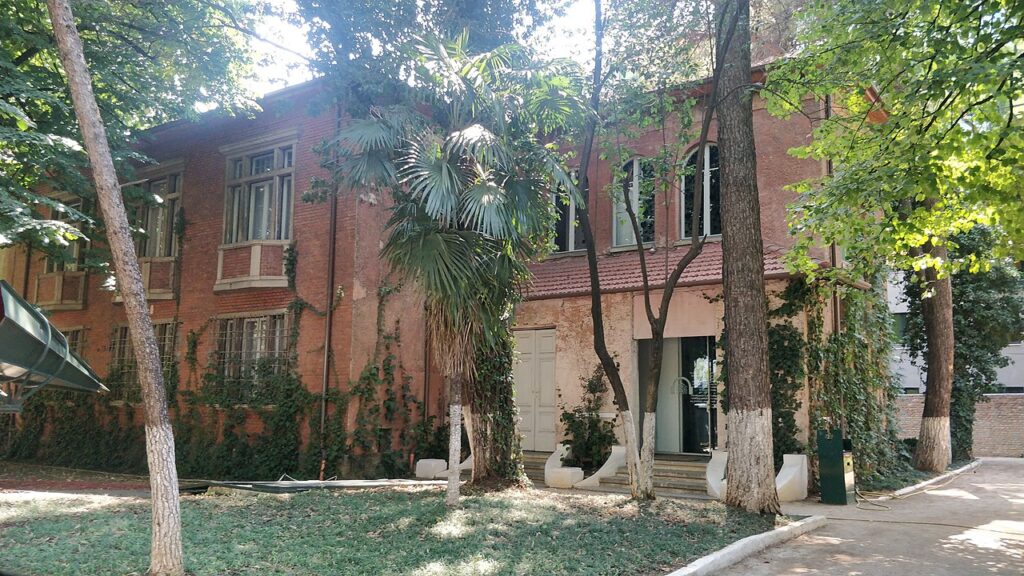
The museum displays original items used by the Sigurimi to spy on ‘the enemy within’ (ie: virtually everyone in Albania) and ‘the external enemy’ (everybody else). The collection includes original recording devices, photographic equipment and bugs, along with illustrations of how the bugs were concealed. Archive film screened in various rooms document statements given by individuals under interrogation, show trainers explaining how to use the equipment and give a voice to some of the survivors.
Bunk’Art installations, Tirana
Sister-installations Bunk’Art 1 and Bunk’Art 2 are dedicated to the interpretation of aspects of the communist period. Built in the 1970s but never used, Bunk’Art 1 is a vast network of underground tunnels intended to shelter the entire government apparatus in the event of invasion or nuclear attack. As you go through the tunnels, each room has a display of photographs and other archive material, illustrating the phases of World War II and the subsequent chilling of relations with one set of former allies after another. Some rooms are used for modern art installations inspired by this aspect of Albania’s history.
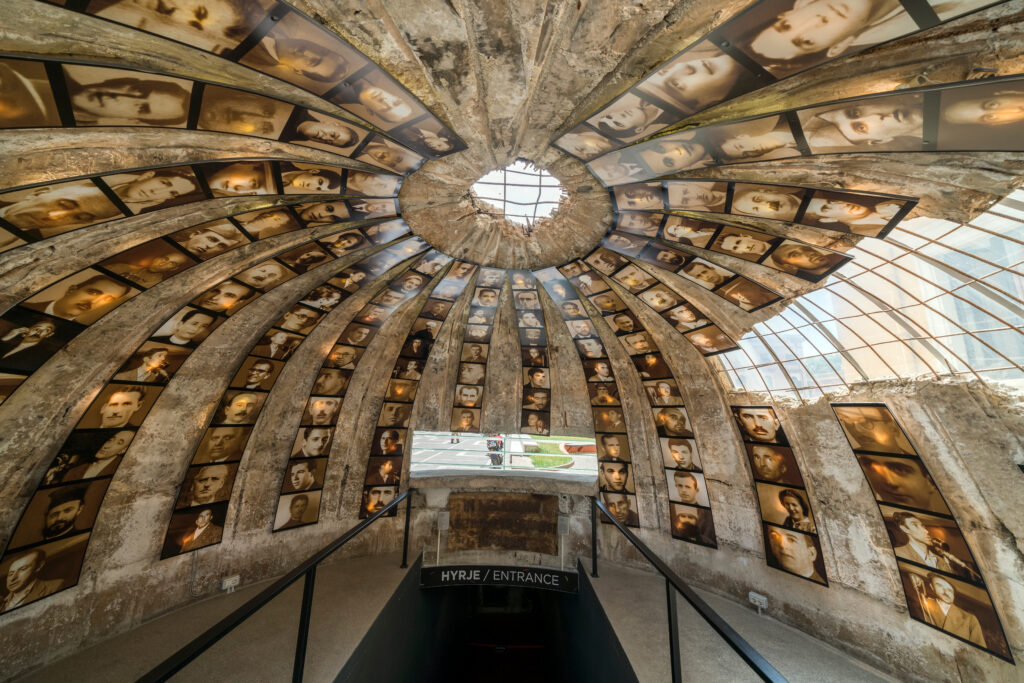
Bunk’Art 2 was a bomb-proof tunnel under the Ministry of the Interior, home to the police force in its various incarnations throughout Albania’s 100-year history. In the museum created in this space, archive photographs and film illustrate the development of policing in the country, from the Dutch-trained gendarmerie of the first years after independence, through the Italian occupation. You can also visit the interrogation rooms and the holding cells in the tunnel, as well as the decontamination room that would have been used in the event of a nuclear or chemical attack.
Site of Witness and Memory, Shkodra
From 1946 to 1991, a rather unassuming 19th-century house on Shkodra’s main boulevard became the regional headquarters of the Ministry of Internal Affairs. This innocuous name belies the political persecution and terror that emanated from this building for 45 years. The storerooms of the former Franciscan seminary were transformed into detention cells and interrogation rooms for the Sigurimi, communist Albania’s secret police. Thousands of people passed through these cells before they were sentenced; they were then either executed or sent on to other prisons or prison camps such as Spaçi.
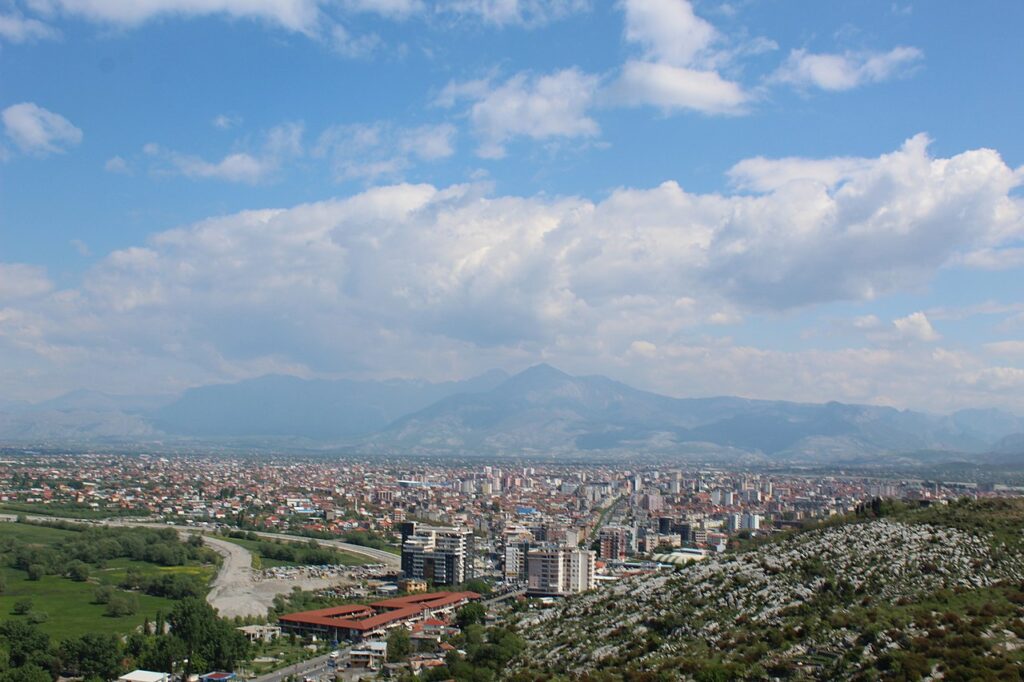
Now the building has been transformed again, this time into a museum that commemorates those who suffered there. Panels in English and Albanian explain various aspects of Albanian communism, including the destruction of religious buildings, the anti-communist uprisings in northern Albania, and the public trials that took place in buildings around Shkodra.
Memorje 78, Saranda
One aspect of Saranda’s history can be seen opposite the post office on Rruga e Flamurit. Memorje 78, a concrete pillbox, half-excavated so that you can look through a grille into its interior is a must-visit for anyone interested in Albania’s communist past.
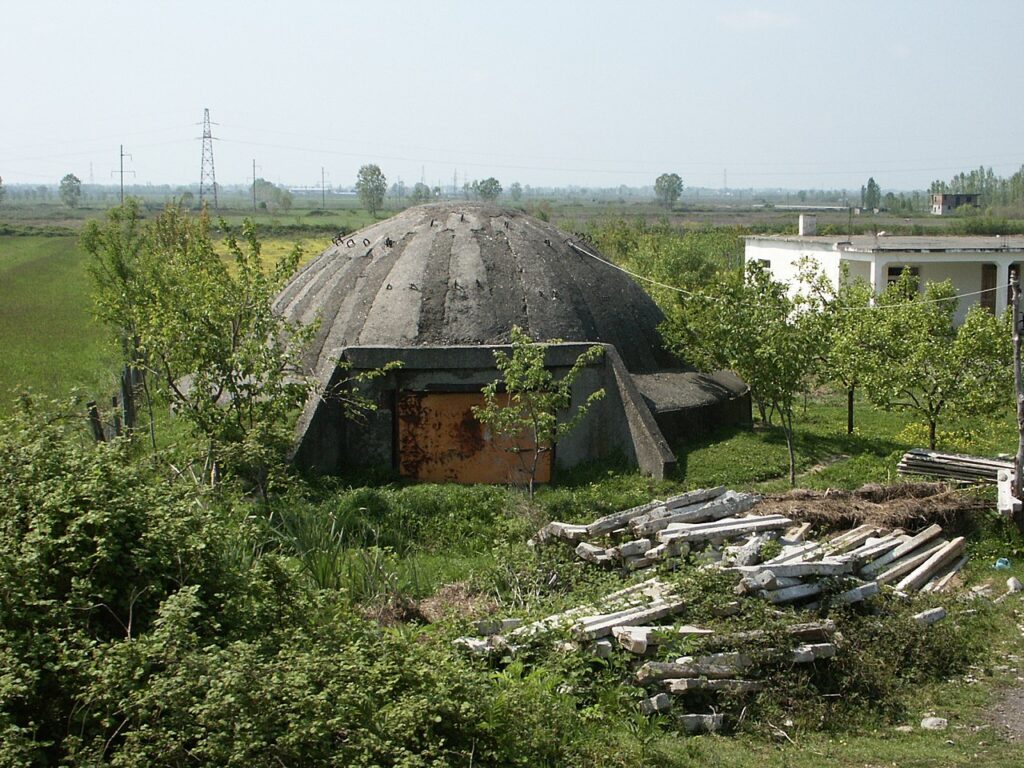
Inside, there is an information panel with photographs of different types of bunker and diagrams of their design. The idea behind the bunkers was that they enabled mountain warfare to be conducted down on the plain. The small bunkers were laid out in lines radiating down from a large command bunker and had a line of sight to it. The large bunkers were permanently manned. In the event of an invasion, every able-bodied male was expected to collect a gun and take up position in his assigned pillbox until ordered to leave it.
Town hall air-raid shelter, Gjirokastra
During the communist years, when town halls across Albania were known as ‘Executive Committees’, air-raid shelters were built under them so that the Committee Members and staff could continue to administer their town in the event of enemy bombardment.
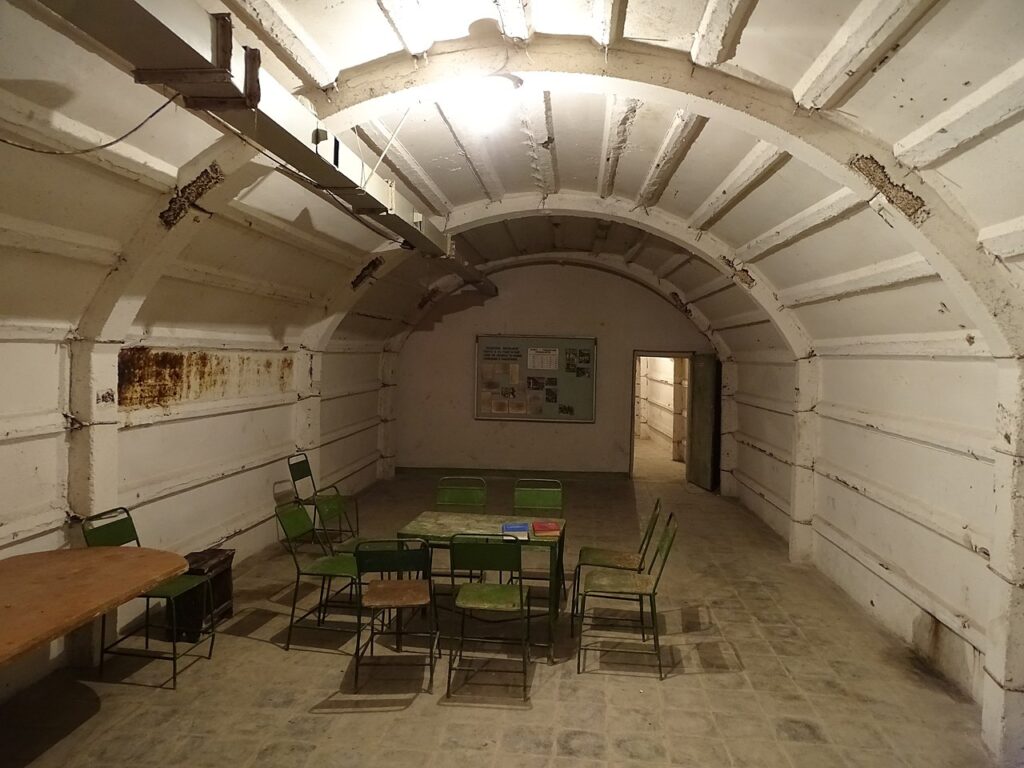
Gjirokastra’s air-raid shelter, now open to the public, is in fact a huge labyrinth of underground corridors with small offices opening off them. Many of the offices still have the signs on their doors indicating which department or functionary would have worked within; even the telephone switchboard operators would have relocated down to the bunker. The functionaries would have slept, as well as worked, in their little windowless offices. In the centre of the labyrinth is a large meeting hall, beyond which are the offices of the party officials who made up the Executive Committee itself.
Spaçi
In 1968, the Albanian government decided to use the copper mine at Spaçi as a forced-labour camp for political prisoners. Over the next 24 years, thousands of men were imprisoned at Spaçi, behind three rings of barbed-wire fence that enclosed the whole 12ha of the mine. An unknown number died, sometimes of exhaustion and malnutrition, sometimes shot.
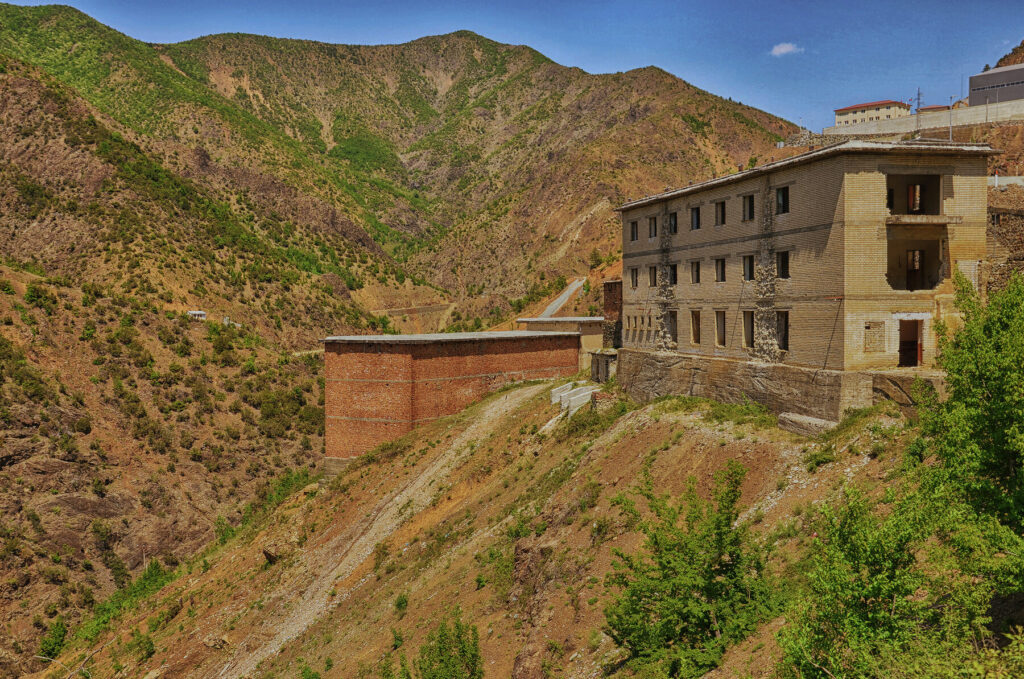
This eerie place, in its bleak setting amid bare, harsh mountains, is a depressing but fascinating place to visit. Information panels in English have been installed around the site and work has begun to stabilise the buildings so that the the prison camp can be transformed into a museum, along the lines of Robben Island in South Africa. A Turkish mining company has built new installations, on the hillside directly opposite the historic site, and is using the same mineshafts that were once worked by the political prisoners.
More information
For more information, check out Gillian Gloyer’s guide:
